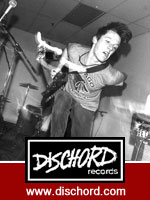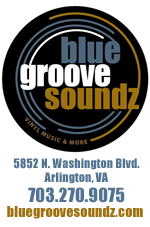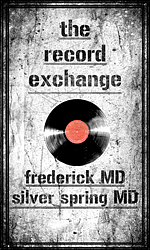
One of the great underrated American bands of the 1960s is The Rascals, purveyors of a soulful brand of East Coast groove that provided a few hits that everybody knows and who forged an expansive, spiritual course before petering out in the ’70s. There have been attempts this century to reunite the original four, primarily by Little Steven Van Zandt, whose efforts also led to a short Broadway stint of reminiscence and rock five years ago, “Once Upon a Dream.”
The dream did not live on; members Eddie Brigati and Dino Danelli went their own ways. But Felix Caviliere, who wrote and sang lead on so many of their songs, has forged on at age 75 with a new iteration of the old band that includes one other original member as well as a renown classic rock drummer who would be seen at first as an odd fit. They played a show at The Birchmere in Alexandria, VA, Thursday.
The cumbersomely named “Felix Cavaliere & Gene Cornish’s Rascals with Special Guest Carmine Appice” was actually a more muscular version of the band that might have otherwise been a pleasant nostalgia excursion. The Brooklyn-raised Appice, still with the black Fu Manchu mustache at 71, was actually influenced by the Rascals just before he started with Long Island rockers Vanilla Fudge. Danelli’s drums were an unsung component of the Rascals, providing exact time and tasteful fills that were integral to the music.
It was the producer Shadow Morton working with the Rascals who produced the four Vanilla Fudge albums. And though Appice went on to play in Cactus, Beck Bogart & Appice, and for people from Ozzy Osbourne to Rod Stewart (cowriting “Do Ya Think I’m Sexy” and “Young Turks” along the way), Appice nailed down the solid beats and fills to run the Rascals engine on the current tour.
It did mean a couple of modest drum solos and a bank of lights to flash around his double bass drum set, but it also may have meant adding a few more of the crunchy, influential garage rock nuggets from the band’s earliest albums, when they were known as the Young Rascals (and wore dumb Little Lord Fauntleroy costumes) so as to distinguish themselves from Borrah Minevitch’s group with Johnny Paleo, the Harmonica Rascals.
These B-sides and deeper cuts were actually the meat and potatoes of local garage bands nationally and here was a whole slew of them—the sneery first single “I Ain’t Gonna Eat Out My Heart Anymore,” but also “You Better Run” and its B-side, “Love is a Beautiful Thing,” as well as “Come On Up” and its flip, “What is the Reason.” “You Better Run” was such a solid song, Pat Benetar made a hit of it 23 years later.
Then there were their own signature hits of course. Because three fourths of the band started as members of Joey Dee and the Starlighters, there was always a trace of 1950s vocal harmonies in some of their songs, from the dizzying choruses of “With a Girl Like You” to the Pet Sounds-like “It’s Wonderful.”
The band played a lot of R&B covers on their early albums and club shows, and there was just one example of that here, “Mustang Sally,” which they claim to have recorded before Wilson Pickett and nonetheless made its writer rich by putting it on the B-side of “Good Lovin,’” the No. 1 anthem they saved until the end.
With nine musicians on stage including a local horn section, the main job of the band was to hew closest to the sound of their biggest hits, even as Cavaliere, his voice still strong, vamped on the phrasing if only to prove it was all live. So of course people swooned at “It’s a Beautiful Morning” early in the set and “Groovin,’ “ late in the show, each coming with a music-backed spoken introduction that served as remnants from the Broadway show.
For all the authenticity of him being there, Cornish at 74 didn’t add a whole lot; he played rhythm guitar and smiled and sang harmony to most songs, but the stinging solos (augmented by the muscle of Appice) came from their touring guitarist Michael Severs. Yet in “Groovin,’” when he pulled out his harmonica for the memorable counter melody, it was all worth while.
The absence of Brigati was felt only when they did songs on which he had soloed, from the early “Eat Out My Heart” to especially the woozy “How Can I Be Sure,” the dreamy waltz that defined middle school romantic angst (at least for me). Bassist James Kenneally admirably handled the Brigati leads on both.
The Rascals didn’t get the late career boost other bands did at the end of the ’60s, though they graduated into experimental production, a foray into Eastern religion (guided by George Harrison, Cavaliere said from the stage), and started turning out the kind of soulful anthems of activism and identity that could have come from Curtis Mayfield and the Impressions, such as “Ray of Hope” and especially “People Got to Be Free,” a song as necessary today as ever.
Its great to have an opportunity to hear these songs once more live from a few of their originators. But at their age, it also means there’s no way after 18 songs they’re going to come back for an encore.
SETLIST
Do You Feel It
It’s a Beautiful Morning
What is the Reason
With a Girl Like You
Love is a Beautiful Thing
You Better Run
It’s Wonderful
I AIn’t Gonna Eat Out My Heart Anymore
Come On Up
Mustang Sally
See
(I’ve Been) Lonely Too Long
Ray of Hope
Heaven
Groovin’
How Can I Be Sure
People Got to Be Free
Good Lovin’
















